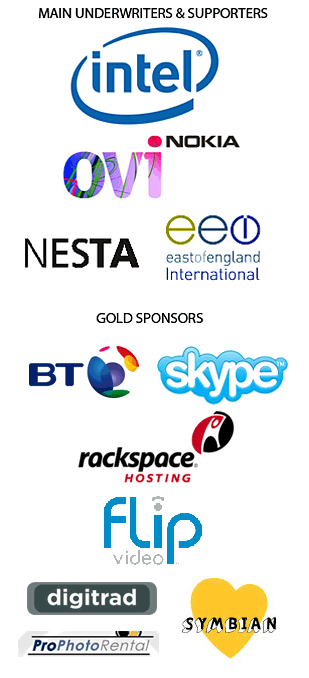Econsultancy’s CEO on Innovation & Social Media
by Renee Blodgett on July 27, 2009 at 10:21 pm
We spent some time with the Econsultancy folks in London during our recent visit, which included a series of roundtable discussions.
Here’s a piece on their blog which touches on innovation through the recession. They’ll also be hosting an awards ceremony specifically around innovation next year.
They have had a Members Forum on their own site for over ten years and are active on LinkedIn and Twitter as they have found these platforms to work best for their target market of digital marketing and e-commerce professionals.
A few words from Econsultancy’s CEO and founder Ashley Friedlein on technology and social media.
Says Ashley, “we have over 10,000 followers on our Econsultancy Twitter account now, which is mostly automatically created tweets from our blog.”
Staff members also have professional twitter accounts, such as Editor Chris Lakey, and they’re starting to create more targeted feeds for their jobs.
Ashley says of their use of Twitter in a Q&A I did with him, “we use Twitter for a number of things. Partly just to drive traffic to our site, which is then monetized via advertising and membership; partly to drive more inbound links to improve our search rankings as a lot of Twitter activity migrate to blogs; partly for customer service where we respond to customers directly on Twitter; and partly for product and service development where we use Twitter to listen to what people want.”
On LinkedIn, they are members of over 80 digital marketing focused groups. For example, the Digital Marketing group, with over 16,000 members, is run by eConsultancy staff, as is the Marketers on Twitter group.
They use these groups less to drive traffic and to market to directly but more for ‘rifle marketing:’ targeting people they’d like to speak at their events.
I asked him, “what do you think are the most important changes in terms of technology implementation for you in the past year?”
Ashley says that the major change has been the complete rebuilding and relaunching of their website and web platform, which included a move from a Microsoft environment to Ruby on Rails. Another more in-depth interview about their relaunch and the unfortunate SEO implications they experienced as a result of the site migration.
“The area that we’re most excited about in terms of what our new technology platform allows us to do,” he adds, “is around data and APIs and the services that this allows us to create.
Services which add value to our site and external sites via syndication of content, functionality or data both into our site, and out onto other sites.
For example, we are already using the Twitter API to automatically post our blog content to our various Twitter accounts as well as import, and show on our site, what is being said about eConsultancy on Twitter in real time.
We’re using this for live event feedback too and plan to roll it out as a feedback and review mechanism for our reports and training too.
We’re also using the Google Analytics API to be much smarter with our analytics and starting to tie the quantitative data that GA provides us with to the qualitative data we get, say, from user surveys. This allows us to start to understand not just “what is happening” but “why.”
We’re also working on exciting new services, using the GA API, to automatically deliver great insight and reporting to our advertisers in our Digital Marketing Supplier Directory.
Things like the Google Charts API, is also giving us ideas for vastly improved user interfaces and ways of showing data in a more compelling and useful way.
And increasingly we’re using our own APIs to provide our clients and members with completely customised versions of our proposition. So, our site and content becomes a true blend of our knowledge and their knowledge.”
I asked him what kind of innovation he needed that doesn’t exist today. I laughed at his first response: a special gadget that turns one hour of normal time into five hours’ worth of time.
He says, “our biggest challenge isn’t coming up with ideas or innovation, but it’s having the time and resources to implement those ideas. And, knowing how to prioritize our ideas.
Perhaps the hardest challenge now is less around technology and more around user experience and user interfaces. It is really hard to come up with brilliant user interfaces to make the mass of content and information we have, let alone all the other stuff we could aggregate, easy and useful to interact with.
So good interaction design, and good copy, are as hard as they’ve ever been, and even more important. Further innovation in user interface design would be good to see.”
Below a few shots during our Econsultancy roundtable event.


